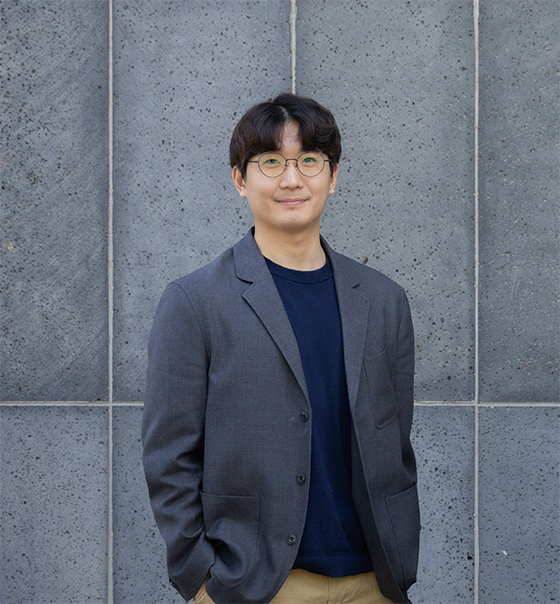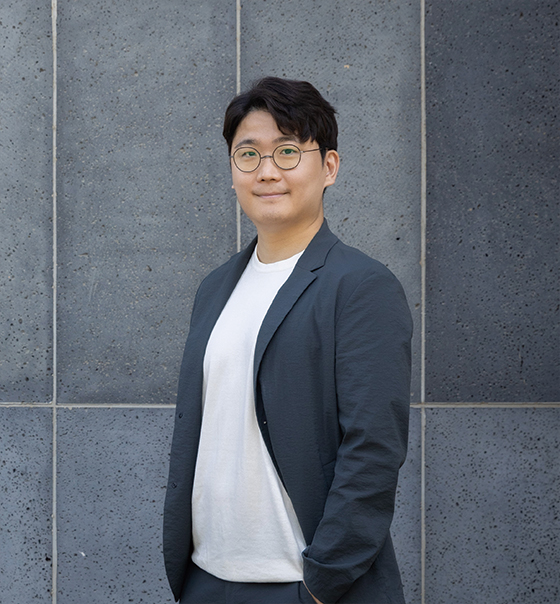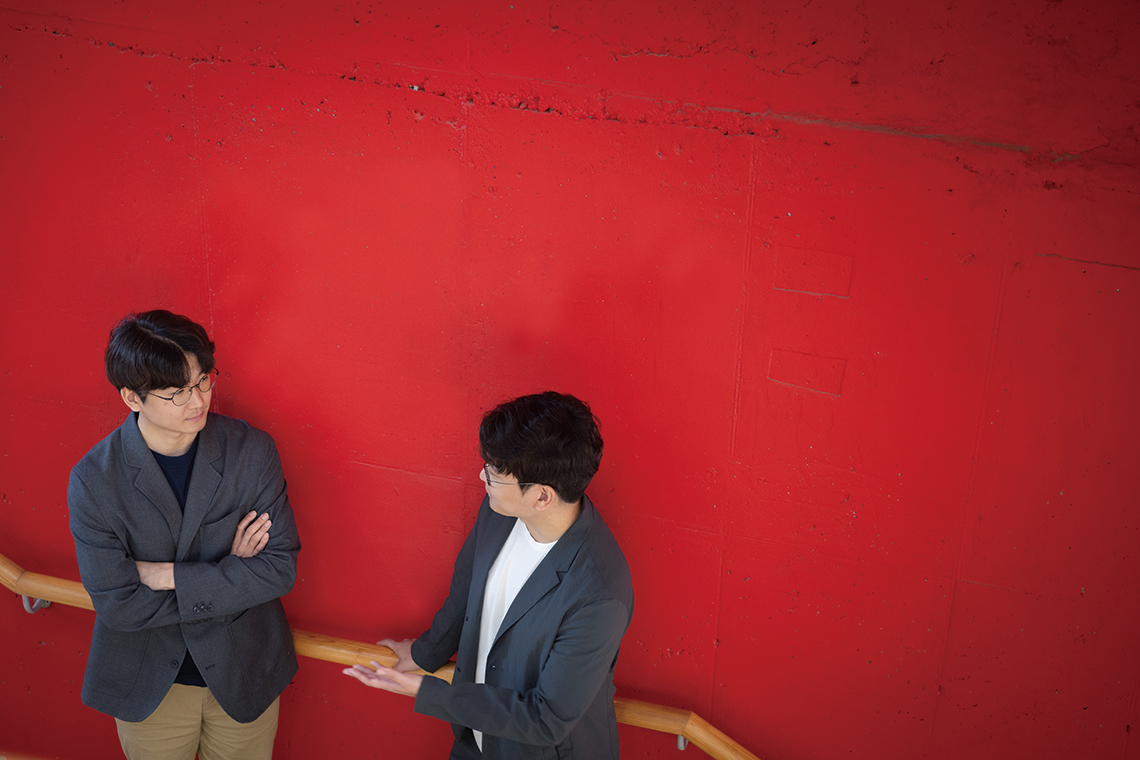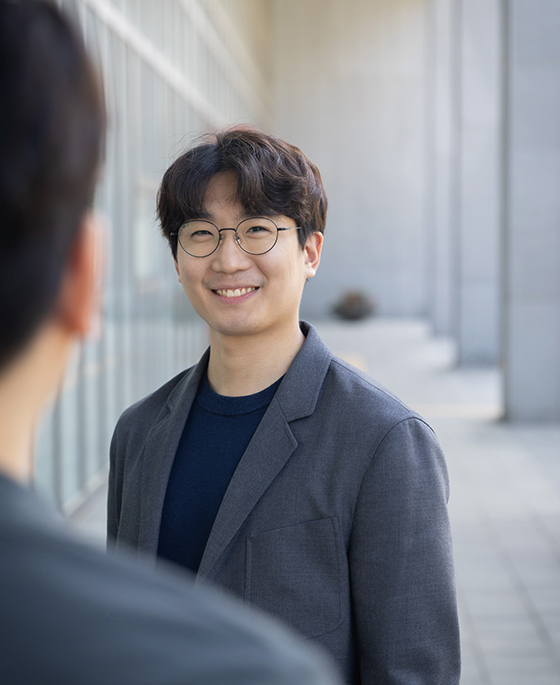
DongHa Kim
Professor, Department of Advanced Materials and Semiconductor Engineering
Professor DongHa Kim conducts research aimed at developing high-performance sensors, especially for monitoring human metabolic and chronic diseases, detecting hazardous and explosive gases, and assessing food freshness.

DongChan Kim
Professor, Department of Artificial Intelligence
Professor DongChan Kim studies motion planning used to determine future movements of autonomous agents, trajectory prediction of surrounding vehicles, and the recently spotlighted end-to-end autonomous driving.
Lifelong Friends, Now Research Partners Working Together
The two brothers attended elementary, middle, and high school together, and although they entered university a year apart, they reunited at the same campus after completing their graduate studies in their respective fields. With a one-year difference in their studies, they met again as professors at the Hanyang ERICA Campus. Professor DongHa Kim, who majored in Advanced Materials Engineering, and Professor DongChan Kim, who majored in Automotive Engineering, are identical twins born just two minutes apart. Coincidentally, the day of the interview with them was also their birthday. The brothers, who came to the interview after celebrating by feasting on their mother’s homemade seaweed soup — a Korean birthday tradition — say their reunion at ERICA feels even more special. Although it has only been less than one semester since they began working together at ERICA, they have already had some humorous episodes as twins. Professor DongHa Kim shared one:
"On my way to work, I was heading to my office with a coffee I got from the campus café. A passing car stopped and someone inside cheerfully greeted me. I didn’t recognize that person at all but I naturally and calmly smiled and returned the greeting. It turned out that the person was actually an acquaintance of DongChan!”
Lately, more and more people are saying hello to him, says DongHa. Although he is worried about appearing rude by not recognizing people, he is also enjoying the situation. He joined ERICA in March last year while DongChan Kim was appointed this year They are both currently setting up their respective research labs and shaping their academic visions. After graduating from the Division of Materials Science and Engineering at Hanyang University, DongHa Kim completed his master’s and doctoral degrees at KAIST’s Department of Materials Science and Engineering and then spent two years as a postdoctoral researcher in the Department of Chemistry at MIT in the United States. Becoming a professor was a clear career path for him. On the other hand, DongChan kept his options open throughout his graduate studies. After earning his Ph.D., he worked for three years at the company 42dot before deciding to become a professor. Despite their different academic paths, both had clear research goals and directions in their respective fields, and they also had a clear vision of the kinds of research environments they wanted to build. The differences in their envisioned research labs clearly reflect their individual styles. First, Professor DongHa Kim remarked:
“Since I operate an experiment-centered wet lab, my goal is to create a lab culture where students can feel free to propose ideas and conduct experiments actively. I encourage generating data through trial and error from unrestricted attempts. That’s why instead of micromanaging, I enjoy a free and self-directed research environment that does not limit creativity.”
Meanwhile, Professor DongChan Kim is setting up a dry lab that analyzes data through computer software coding, suited to the nature of the AI field. He described it as follows:
“In my case, aside from actual experiments involving for example, autonomous driving vehicles, I analyze data through software-based coding. Of course, I am not aim solely to maintain a dry lab; my ultimate goal is to create an environment where we can collect data and test algorithms directly.”
 Professors DongHa Kim and DongChan Kim are currently conducting joint research with the aim of publishing an SCI paper based on complementary research, and plan to develop next-generation intelligent gas sensor systems together.
Professors DongHa Kim and DongChan Kim are currently conducting joint research with the aim of publishing an SCI paper based on complementary research, and plan to develop next-generation intelligent gas sensor systems together.
Deep & Wide: Blending Disciplines for Joint Research
DongHa conducts research on high-performance sensors focusing especially on real-life applications like monitoring human metabolic or chronic diseases, detecting hazardous or explosive gases, and assessing food freshness. However, due to issues such as low gas selectivity and slow response- and recovery-rates, actual commercialization of these sensors is still limited. DongChan on the other hand, is conducting various autonomous driving technology studies that incorporate AI, based on his background in automotive engineering. He is focusing particularly on motion planning (which determines the future movement of autonomous agents), trajectory prediction of surrounding vehicles, and the increasingly popular end-to-end autonomous driving.
Their different fields has led to different research styles. While DongHa has continued in-depth studies in a single field, DongChan’s field of artificial intelligence requires flexibility and responsiveness to adapt quickly to changes. DongHa commented, “I’ve been thinking about how to incorporate DongChan’s research and AI field into my own research.” DongChan has been consistently suggesting the integration of AI to his brother for a long time.
“Since graduate school, I’ve been discussing the use of AI with my brother for over five years. As AI-based research is gaining attention in the field of materials science, we are now trying to collaborate through our respective research domains.”
In the case of the high-performance gas sensor field that DongHa is working in, developing sensors that can selectively detect target gases in complex mixed-gas environments is essential for real-world applications. However, because real-world environments contain dozens to hundreds of mixed gases, detecting a specific gas with high selectivity and precision using a single sensor fundamentally has limits. To solve this, it is necessary to build a sensor array that combines various sensors with different characteristics and to develop technologies that can precisely analyze the patterns of signals generated by mixed gas leaks. DongHa is working on designing and building high-sensitivity sensor arrays based on various materials and structures. Meanwhile, DongChan uses AI algorithms to study the recognition and interpretation of complex signal patterns obtained from the sensor array. Based on this complementary research, the two are currently working to publish a joint SCI paper. In addition, they plan to co-develop the next-generation intelligent gas-sensor systems for precise detection in complex gas environments. Synergy created by integrating their fields is highly anticipated.
The brothers hope that within ten years, they will both be recognized as influential researchers contributing not only to academia but also to related industries. ERICA looks forward to the extraordinary chemistry and results that these twin professors will bring to their industries and society.







